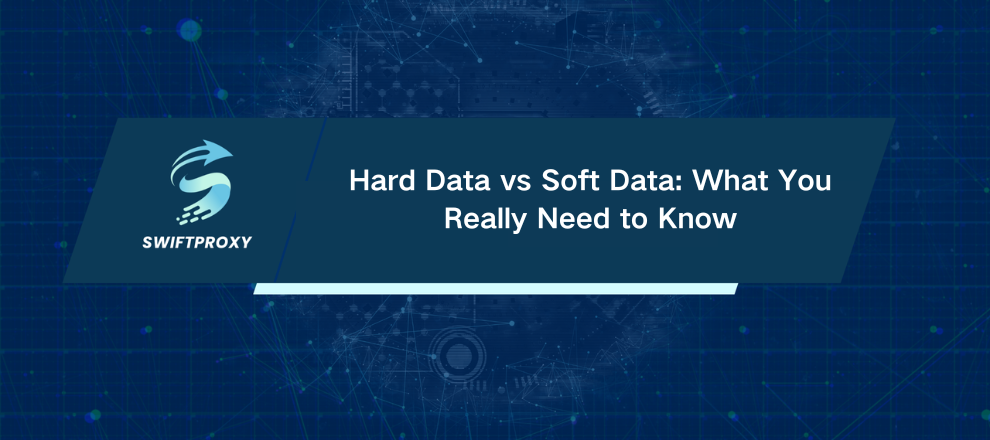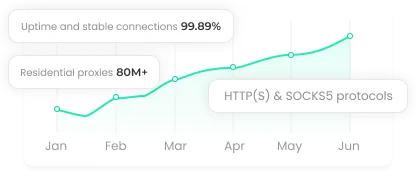Hard Data vs Soft Data: What You Really Need to Know
Every business decision is powered by information—but not all data is created equal. Some numbers tell you what happened, while others reveal why it happened. Understanding the difference between hard data and soft data isn’t just useful—it can be the difference between a strategy that flops and one that delivers results. Let’s break it down and show you how to use both types effectively.

What Hard Data Is and Why It's Important
Hard data is straightforward. It's numbers, metrics, and stats you can verify. It's objective. Quantitative. Trackable.
Think analytics dashboards, CRM metrics, financial reports. These numbers give you a clear picture of what's happening over time. They show trends, highlight patterns, and flag anomalies.
For example, if your e-commerce ad campaign sees a sudden dip in conversions, hard data tells you that the problem exists—but not why. That's when you need something deeper.
Hard data excels when precision and consistency are key. It fuels forecasting, validates hypotheses, and drives automated reporting. But on its own, it doesn't explain behavior.
What Is Soft Data and Why You Can't Ignore It
Soft data is the human side of information. Opinions. Experiences. Feedback. Emotional responses. It's qualitative. Subjective. Often messy—but incredibly valuable.
Gather it through:
Focus groups or interviews
Online reviews, comments, and user-generated content
Focus groups capture nuance—what people feel, how they react, why they make choices. Online content gives scale—hundreds or thousands of unsolicited impressions you can analyze for sentiment, recurring complaints, or praise.
Soft data adds context. It explains why your hard metrics look the way they do.
Hard Data vs. Soft Data
Here's the simple truth:
Hard data: objective, measurable, verifiable, and usually automated. Ideal for tracking performance or testing hypotheses.
Soft data: subjective, interpretive, and often manually collected. Perfect for uncovering motivations, perceptions, and behavioral drivers.
Numbers tell you what happened. Qualitative insights explain why it happened. Use one without the other, and your decisions are incomplete.
When to Use Hard Data
Leverage hard data when you need accuracy and objectivity:
Measure marketing effectiveness: CTR, conversion rate, ROI
Optimize sales funnels: identify bottlenecks
Monitor KPIs and business metrics
Forecast performance using historical trends
Conduct quantitative risk analysis
Generate automated BI reports
Build financial plans from verified figures
Test hypotheses in controlled A/B experiments
When to Use Soft Data
Soft data shines when you need to understand context, motivations, or perception:
Analyze social media sentiment and online communities
Assess customer satisfaction via reviews, surveys, and NPS scores
Conduct UX research through interviews and feedback
Extract insights from focus groups
Real-World Examples of Hard and Soft Data in Action
E-commerce
Hard data tracks clicks, conversions, and abandonment rates. Soft data explains why customers drop off—reviews, surveys, and interviews reveal pain points you can fix.
HR and People Management
Metrics like turnover rates or absenteeism identify problems. Exit interviews or anonymous surveys reveal root causes. Numbers show what's happening; people's words show why.
UX and Digital Products
Analytics tells you where users click and how long they stay. User interviews and beta feedback reveal whether your interface is intuitive—or frustrating.
Marketing Campaigns
Clicks alone are meaningless if conversions lag. Soft feedback identifies messaging gaps, audience misalignment, and opportunities to refine campaigns.
Finance and Investment
Revenue growth looks good on paper. But qualitative intelligence—market sentiment, competitor behavior, leadership changes—adjusts risk and informs smarter decisions.
Conclusion
Neither hard data nor soft data can stand alone. Numbers give you clarity and precision, while insights provide depth and understanding. The real power comes when you combine them—using metrics to track performance and qualitative feedback to uncover the reasons behind the trends.
By balancing both, your business decisions become not just data-driven, but truly informed and strategic, turning information into action that delivers real results.

















































